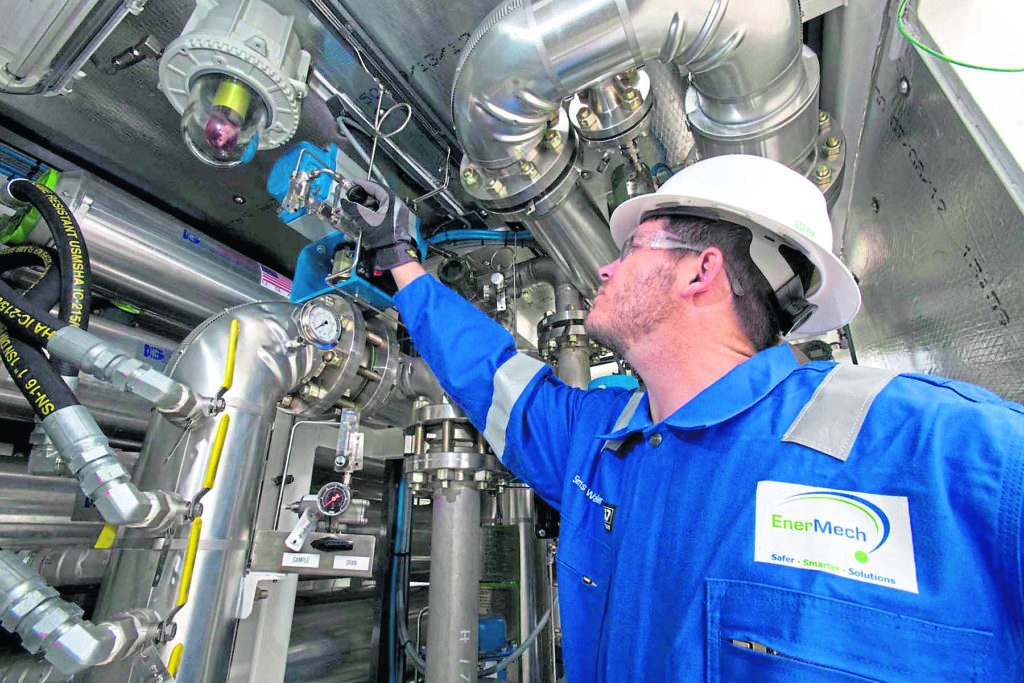
Overall, 2018 was a bit of a damp squib in terms of mergers and acqusitions (M&A) activity in oilfield services.
There were very few deals, and those which did make it over the line were not of the headline-grabbing variety we saw in 2016 and 2017.
As a result of this prior consolidation, large companies have been more inward-looking, concentrating on integration rather than acquisition.
To understand the drivers behind the stagnation in deals, you need look no further than the big five. Schlumberger, Halliburton, Baker Hughes, a GE Company (BHGE), Weatherford International and NOV were not as active as in previous years.
Schlumberger has been almost entirely internally focused.
With Weatherford over-leveraged and focused on asset sales, it’s unsurprising they had no appetite or capital for deal-making.
Meanwhile, Baker Hughes, again distracted by GE’s lack of long-term commitment, has been off the acquisition trail.
Halliburton bucked the trend to some extent by consistently adding technology through acquisition and NOV has continued to diversify through acquisitions.
The one sector that has been active is the offshore drilling space, where there were significant transactions.
These included Transocean’s acquisitions of Songa and Ocean Rig, as well as the merger between Ensco and Rowan Drilling.
These deals were largely driven by a need to increase market share in a still fragmented market, and consolidation will potentially continue into 2019.
With companies unable to deliver the earnings profile attractive to private equity (PE) and a lack of debt available to finance deals, it’s not surprising there’s been little activity, even among the specialist PE firms.
A notable exception and the only stand-out deal in the UK was Carlyle Group’s acquisition of Limerock-backed Enermech.
A fragile recovery at the start of last year turned into growing optimism by the late summer, but faltered with a drop in oil prices at the tail end of 2018.
This spooked the market and led to a sudden slowdown in deal completions.
Looking forward to what 2019 has in store for dealmakers, we expect to see things picking up.
If the Brent crude oil price remains stable around the $60 per barrel mark, we should see sustained activity this summer.
The prolonged oil and gas downturn means that the industry should soon see some willing sellers – particularly among those private equity-backed businesses who are six years or more into their deal cycle.
But it would be folly to assume these potential sellers are all going to be snapped up by one of the big five, and so technology-led businesses are going to find it harder to attract strategic buyers at desired multiples.
Buy side activity is more likely to be found among the emerging mid-market players.
We’ve seen a growing trend in
mid-tier technology acquisitions, evidenced by Corelab’s acquisition of Guardian Global Technologies, Nabors buying RDS and GeoDynamics selling to Oilstates.
Equally, with improved market conditions, greater oil price stability and clearer earnings trajectories, we’ll see the return of private equity deals, primarily among those firms specialising in oil and gas.
There may also be a renewed appetite among the generalist firms.
However, the oil service industry has not provided great returns for financial investors in recent years, with generalists – not so familiar with the boom and bust cycles – finding the going tough and several may not have appetite for more industry exposure.
Some deal dynamics in 2018, such as minority deals, where companies have acquired a stake in a business, like TechnipFMC buying into Magma Global, and paper deals (share for share transactions) might continue as businesses look for lower risk/less cash deals which offer relative rather than absolute values.
One thing for certain is continued interest in offshore wind.
Now that this adjacent market has come of age and is no longer seen as subsidy-driven, it is attracting the larger industrial players.
Expect to see more deals like Oceaneering’s acquisition of Ecosse Subsea, a niche player with a strong foothold in offshore wind energy.
It’s worth noting that the oilfield services market is still dominated by US-listed companies.
American capital markets influence corporate thinking and Wall Street has been much more interested in US land-based deals in recent years.
Any international deal activity will, therefore, always have to compete for attention with “closer to home” and “lower risk” transactions geared to US shale, where companies see potential for quicker returns.
Recommended for you

